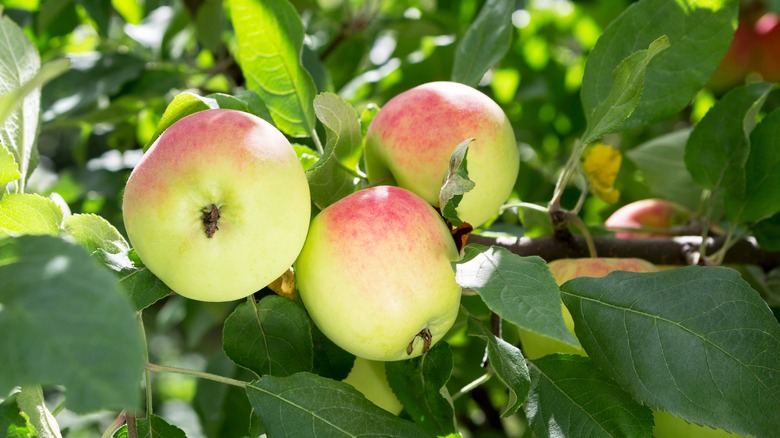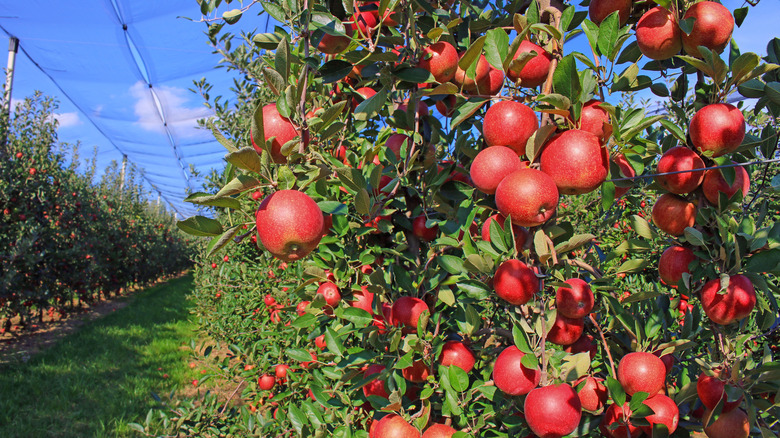The Massive US Apple Collection You Probably Don't Know About
We've all heard the old adage that an apple a day keeps the doctor away, but did you know the original saying was a little bit different? According to Healthline, the phrase originally went, "Eat an apple on going to bed, and you'll keep the doctor from earning his bread." This iteration really flips the narrative on its head by spotlighting the doctor's financial ruin, and it almost sounds anti-apple. But the adage is true — to an extent. But don't go skipping your annual checkups, as Healthline notes apples are linked to several health benefits, including supporting heart health, strengthening bones, protecting against asthma, and reducing the risk of diabetes by a significant degree.
But if an apple a day really does threaten doctors the way the old adage said, physicians will be sad to learn that roughly 322,000 acres of U.S. land are devoted to apple orchards (via World Population Review). Most of these grow fairly standard varieties like Granny Smith and Red Delicious, but a small handful of orchards around the world are up to something different. The New York Times reports that there are 40 apple diversity collections (orchards that grow apples for research, not the grocery) located across the globe, the largest of which in America is managed by the United States Department of Agriculture (USDA).
Growers continuously produce new apple varieties
The USDA Plant Genetic Resources Unit in Geneva, New York grows apple, cherry, and grape cultivars by the thousands. Covering 30 acres, The New York Times reports they have over 5,000 apple varieties growing on the premises. There are around 7,500 varieties of apples known to humankind, via Select Health, meaning the USDA has samples from a full two-thirds of nature's offerings. They are there to be studied by scientists hoping to better understand the genetic diversity of the apple world, and to potentially breed new varieties that are more resistant to diseases and climate change, have longer shelf lives, and perhaps even taste better.
It all has to do with the fact that apples have notoriously complex genetics. They tend to exhibit extreme mutations when grown in the wild, and until ancient Romans mastered the selective breeding of apple trees, people rarely ate the fruit because they couldn't grow them at consistent quality. The work of the Romans is being taken to the next level today, with The New York Times citing Cosmic Crisps, SnapDragons, and the ever-popular Honeycrisps as apple varieties that emerged relatively recently through the breeding efforts of scientists like those at the diversity collection in Geneva. However, it can take roughly 20 to 25 years to develop a new variety and get it to markets on a large scale, so we'll have to be patient.

